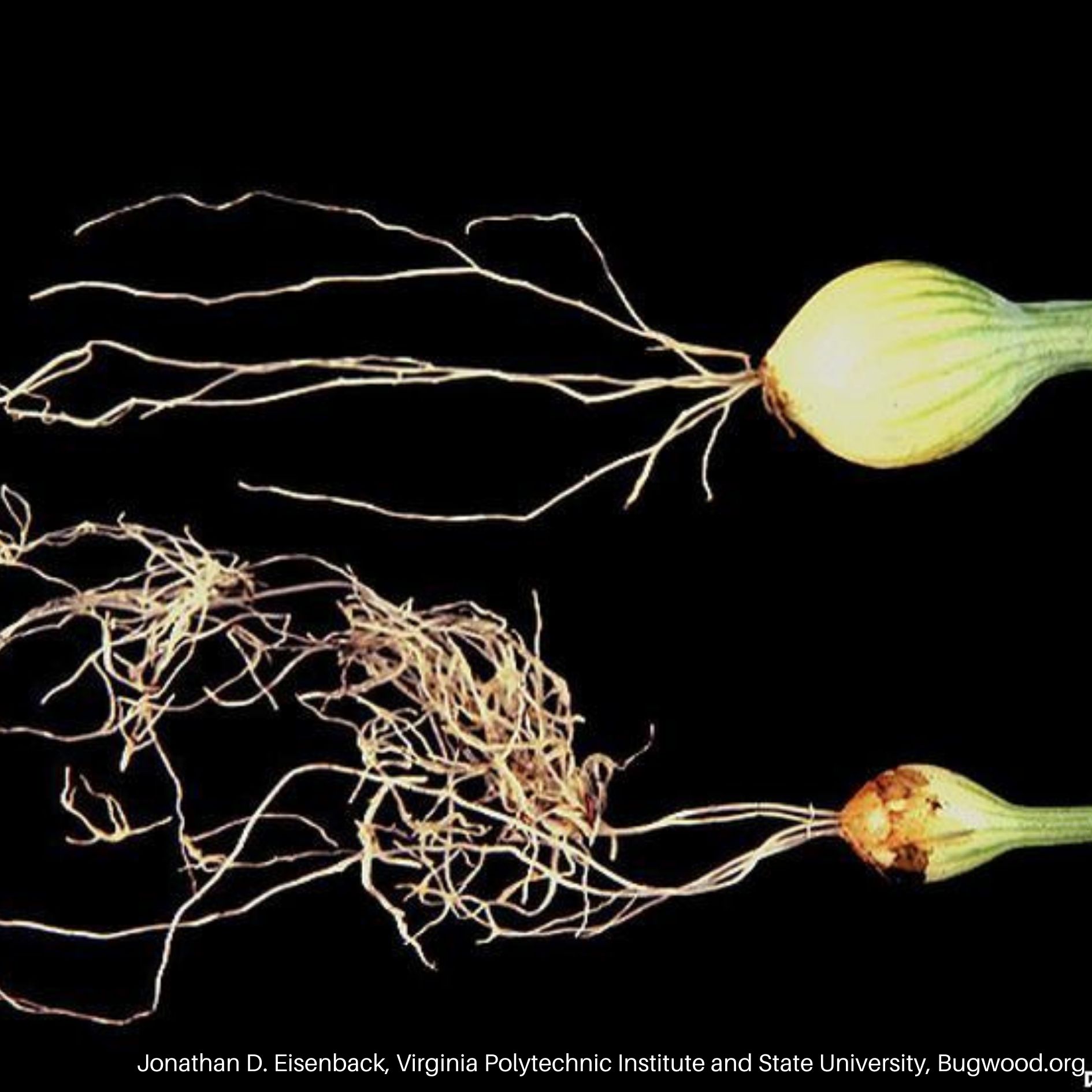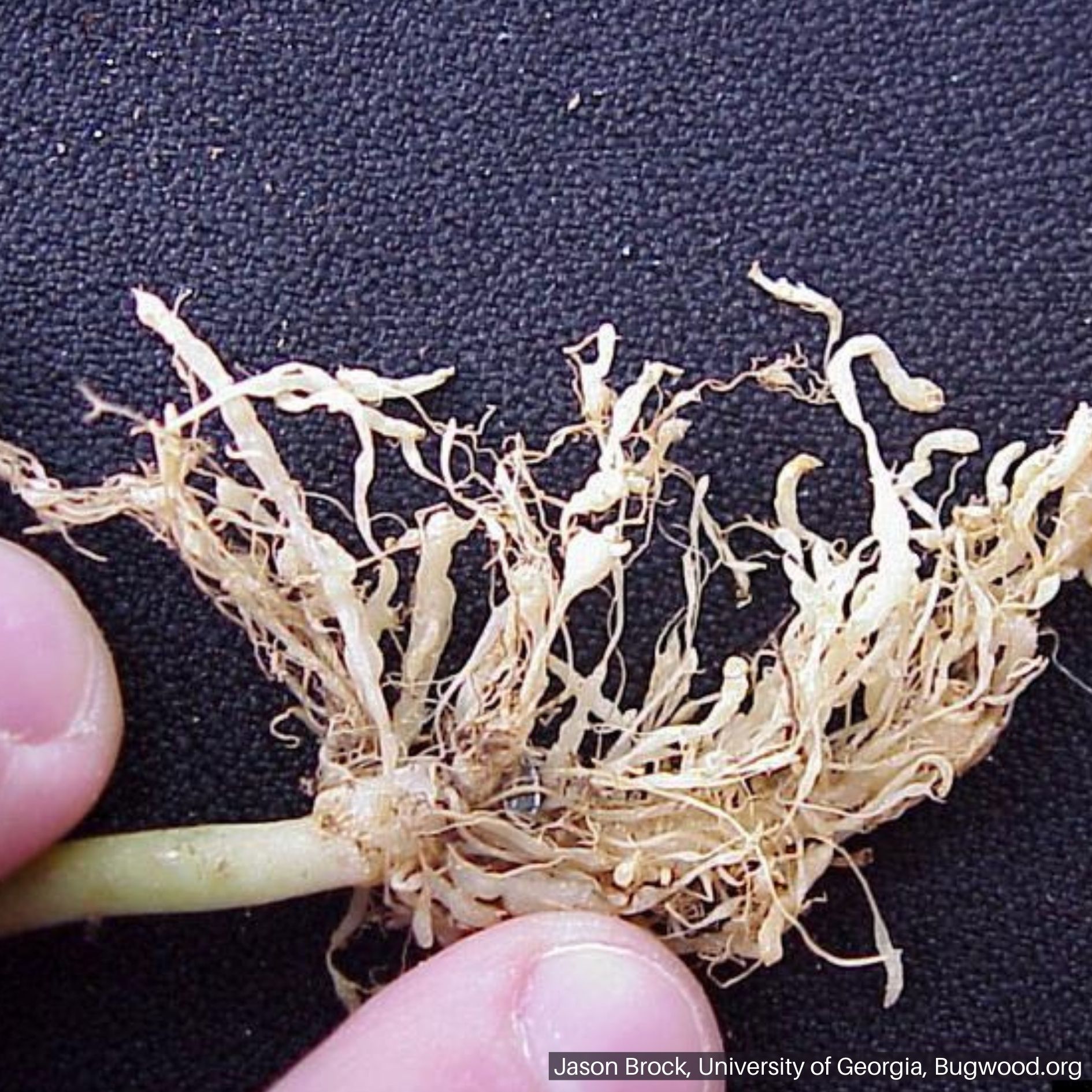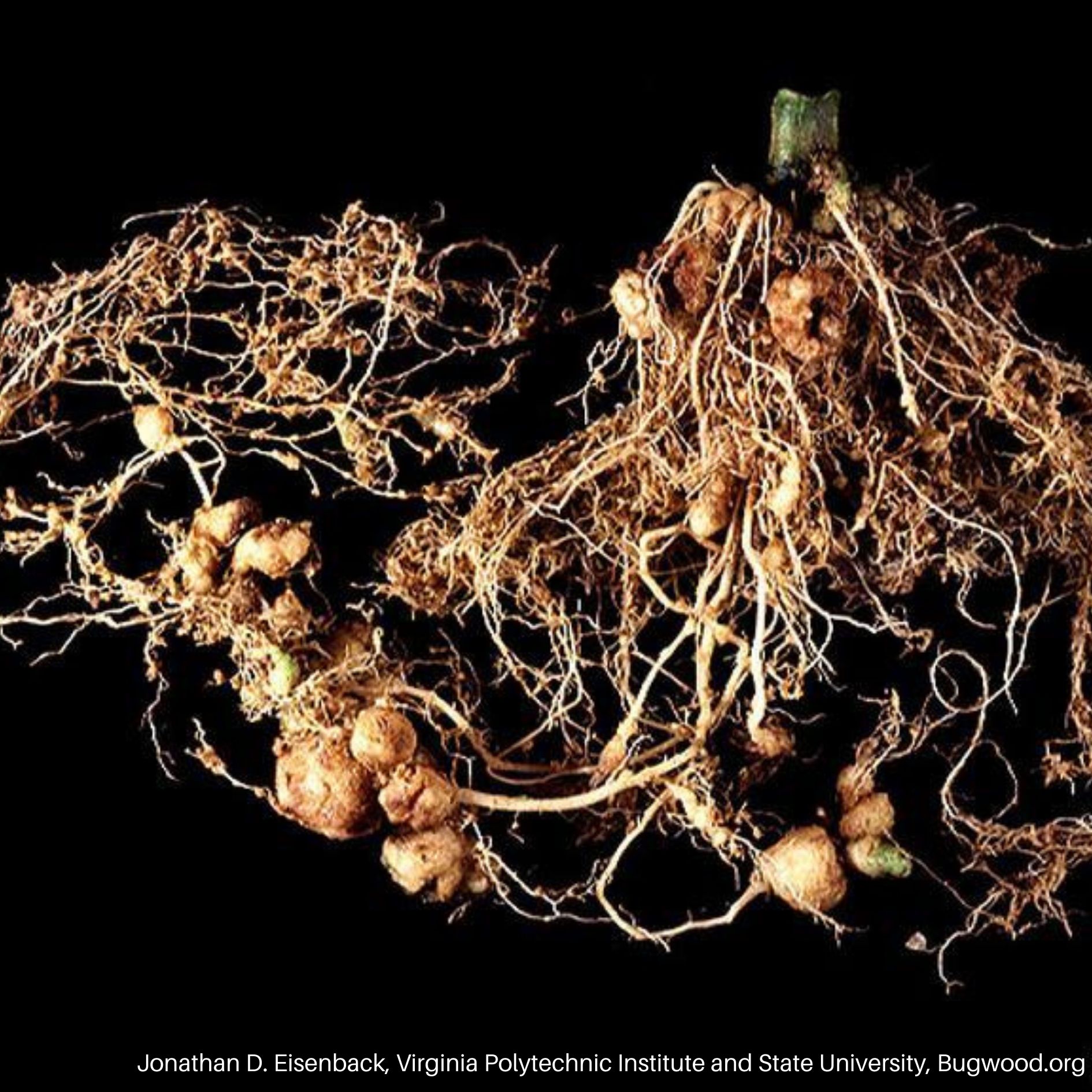Root-Knot Nematodes
 Root Knot Nematodes
Root Knot Nematodes Healthy Onion (Top) Compared to Onion Damaged by Nematodes (Bottom)
Healthy Onion (Top) Compared to Onion Damaged by Nematodes (Bottom) Watermelon Seedling With Root Damage from Root Knot Nematodes
Watermelon Seedling With Root Damage from Root Knot Nematodes Tomato Plant with Severe Root Damage from Nematodes
Tomato Plant with Severe Root Damage from NematodesHOSTS
- Many vegetables, fruits, grasses, weeds, etc.
DESCRIPTION
Root-knot nematodes are microscopic roundworms that enter plants through the root tips and move up in the root until they find a preferred spot to feed. A few common species found in Utah include Meloidogyne hapla, Meloidogyne incognita, and Meloidogyne chitwoodi.
BIOLOGY
Root knot nematodes are a concern through the growing season, but control measures are only effective before or at planting.
- Infection occurs when root-knot nematodes enter the plant through the roots.
- Overwinter as juveniles in the soil.
SYMPTOMS
Root-knot nematodes are microscopic roundworms that enter plants through the root tips and move up in the root until they find a preferred spot to feed. They feed by releasing chemicals that cause cell nuclei to divide without cell division, creating giant feeding cells. Above-ground symptoms are chlorosis and stunting resembling nutrient deficiency. Roots of infected plants have galls. Large galls can merge to look like one big tumor.
GENERAL MANAGEMENT
Root-knot nematodes are occasional in Utah.
- Root-knot nematode problems are often discovered after finding galled roots on a previous crop.
- A simple bioassay can be used to detect root-knot nematodes in the soil or a sample can be sent for testing to a nematology lab.
- Use tolerant varieties when available.
- Keep infested fields fallow for 2-3 years.
- Remove all weeds.
- Roto-till fallow areas once every 3-4 weeks during the hot, dry summer months.
- Telone soil fumigation in commercial fields.
Except fumigation for commercial fields, there are currently no chemical options for root-knot nematode control.

